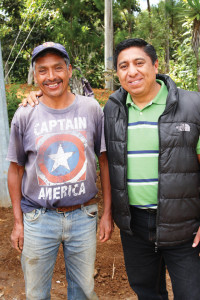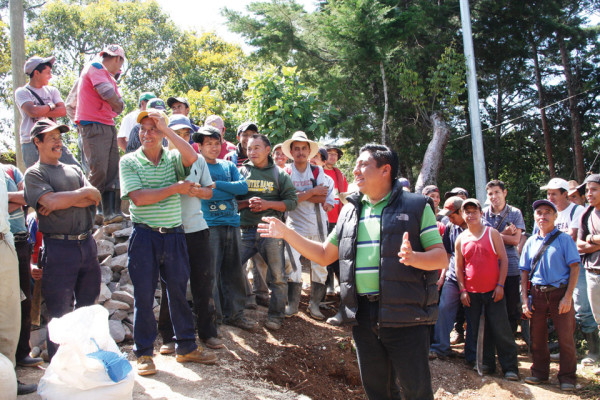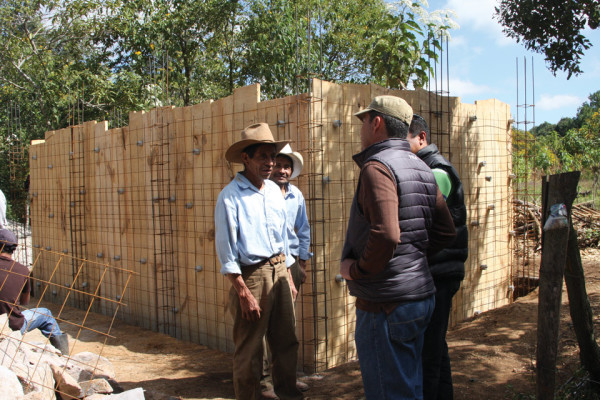It Does Take a Village
Building a community at the grassroots level.
text / photos by Kerstin Sabene.
Implementing change, even when it’s meant to reduce health and social disparity, can be challenging.
No one understands this better than Ignacio Ochoa, director of the Nahual Foundation, a think tank by and for indigenous people of the Americas, based in La Antigua Guatemala. Ochoa, who has been a staunch advocate of human rights since he was a teenager, has enjoyed a prolific career that includes among other things, work as an anthropologist conducting field studies with indigenous peoples in countries throughout Latin and Central America.
Having lived through decades of a tumultuous civil war and guerrilla insurgencies that swept through Guatemala and much of Latin America beginning in the 1960s, Ochoa witnessed firsthand the steady erosion of his country’s social structure. “This instilled in me an even greater sense of civic duty and the need to promote social justice and to advocate for human rights in Guatemala,” he stated. One of the ways he sought to help citizens in rural areas begin to repair their infrastructure and prioritize their needs was through creating awareness of COCODEs, which is an acronym for Community Council Development. “Action was clearly needed at the grassroots level and COCODEs was the perfect tool because it was already the law of the land and accessible,” he said.
Enacted by the federal government in 2002, the Urban and Rural Development Council Law mandated the creation of local and regional development organizations, to be comprised of representatives from communities, civil society and the government. Within the community council development framework, local communities can deliberate options on public investment and channel their formal requests directly to the municipalities. Ochoa explained that the majority of the populace was not adequately aware of or knowledgeable about this legislation.
When he created the Nahual Foundation over 10 years ago, one of its first priorities focused on training community leaders how to organize and take advantage of the COCODEs system that was already in place. Through weekly meetings, Ochoa, along with a team of volunteer professionals, began teaching community administrators from the department of Sacatepéquez about the Urban and Rural Development Council Law, its regulations and the kinds of resources that were available to them.
Depending on the size of the village, the community council development committee is made up of five to seven individuals. The men and women who serve on the committee are usually volunteers and some are elected every year. They make decisions for the village, prioritize needs and are responsible for the day to day governance of their community.
The Village of El Molino
—a COCODEs success story
In the quiet Mayan village of El Molino, situated within the municipality of San Martín Jilatopeque about 27 kilometers northwest of Antigua, lies proof that COCODEs actually works. The community had long recognized the need for clean water delivery to its population and with the COCODEs system already in place, laid the groundwork three years ago by first purchasing the rights to a spring that was located about seven kilometers from the proposed water distribution site.
“The advantage of having COCODEs already in place is that it allows NGOs—non-governmental organizations—the option of teaming up and working with them in their own community,” said Lois Werner, president and co-Founder of People for Guatemala, a U.S.-based NGO. Together with their in-country partner Hombres & Mujeres en Accion, Werner set up operations in the municipality of San Martín seven years ago. She explained that the commitment required to form and operate a development council demonstrates to an NGO that these communities are more reliable partners and therefore safer investments for development projects.
In the case of the El Molino water project, the village council had already worked out many of the details before seeking support from Hombres & Mujeres en Accion. They were able to raise 175,000 quetzales—the approximate equivalent of $23,000 —to purchase the water spring and to find land for the site of the water distribution tank. Once they owned the land and the water source, the council approached the municipality of San Martín to request a water study and a plan for delivering water from the spring and distributing it to all of the families. At this point, the municipality provided them with an engineer and they worked out a new budget with their supporting NGO.
“What’s wonderful about this approach is the collaboration between everyone involved including the municipality of San Martín, Hombres & Mujeres en Acción, donors and the development council,” said Werner. All of the families had to pay 25 percent of the cost of the construction materials, ranging from cement, gravel and wood to the PVC pipe fittings and pressure valves. The village also provided all of the unskilled labor. “In this way, everyone is a partner and shares ownership of the project,” she added. “You can feel an enormous sense of pride and accomplishment among the participants.”
One of El Molino’s women sold all of her turkeys to come up with her 25 percent (approximately $110) because it was her life’s dream to have running water. She expressed great faith in the project and clearly understood that good things take longer to accomplish. Prior to completion of this project in January 2015, water was carried in jugs or plastic containers from other sources near their homes.
“Once women have running water, they no longer have to walk their laundry to a spring and young girls don’t have to get up to walk with their mother and miss school,” Werner added. The health benefits of having clean, running water are enormous in addition to giving women more time to devote to other important tasks.”
For more information visit People for Guatemala’s website at www.peopleforguatemala.org


